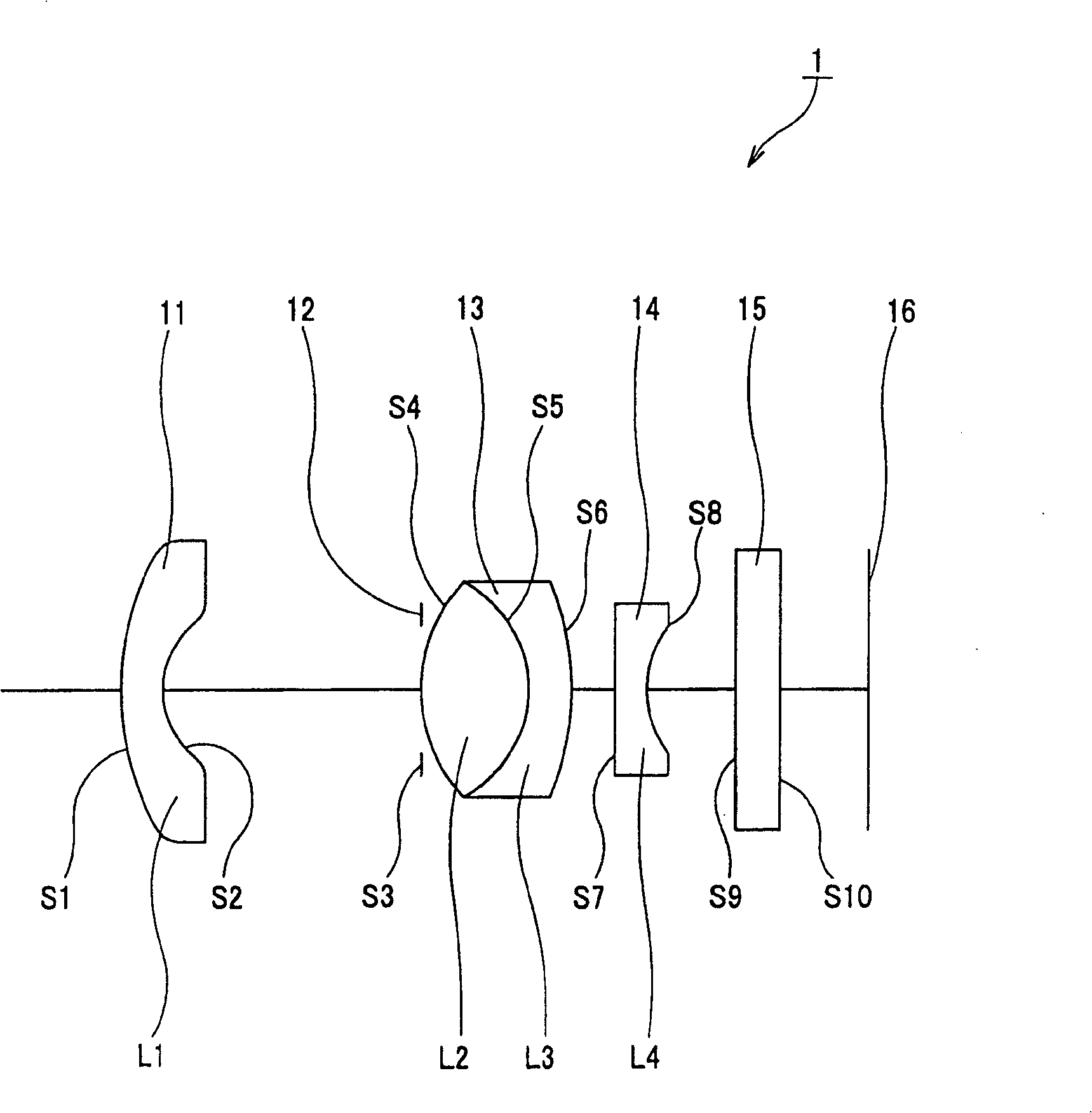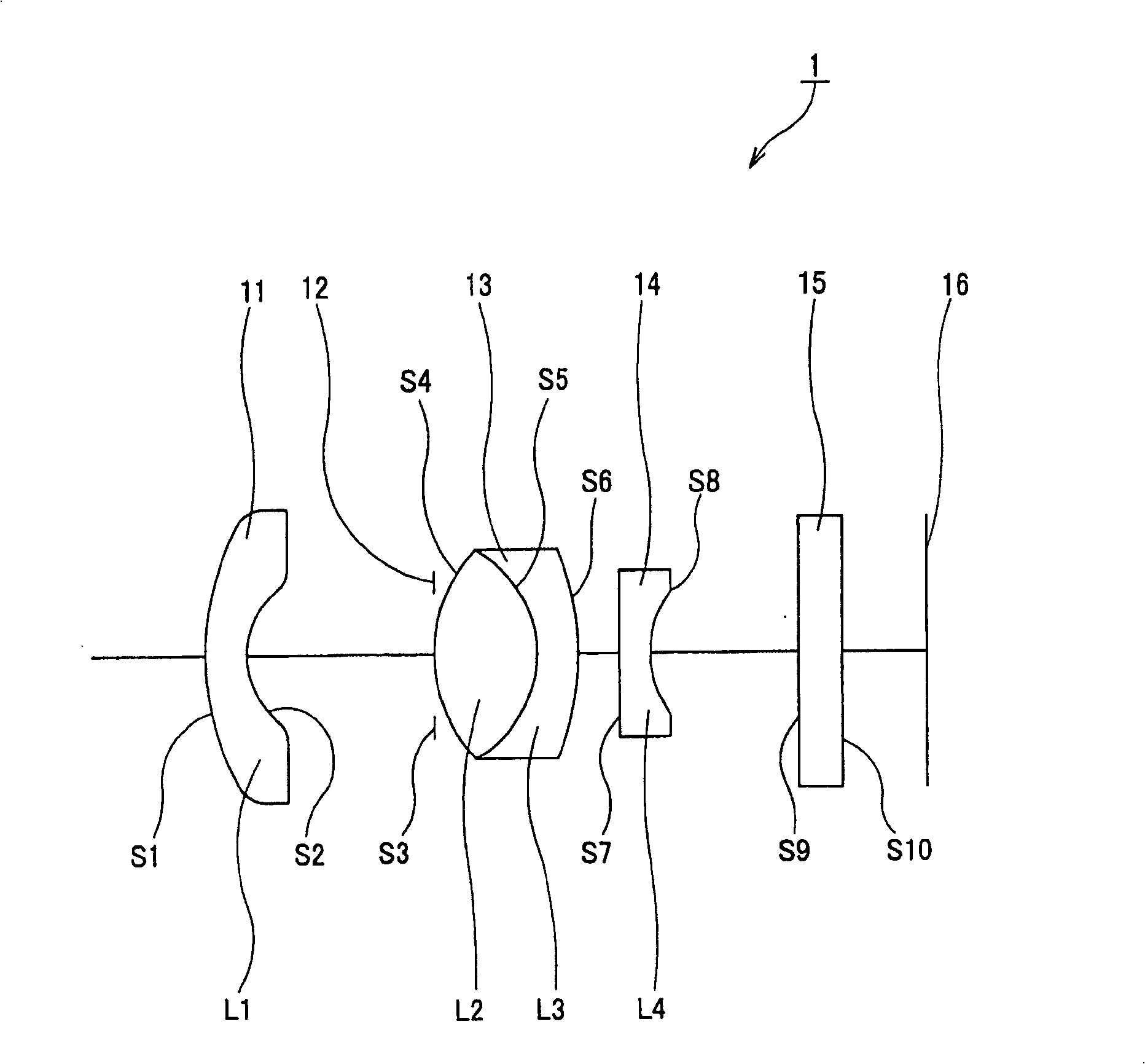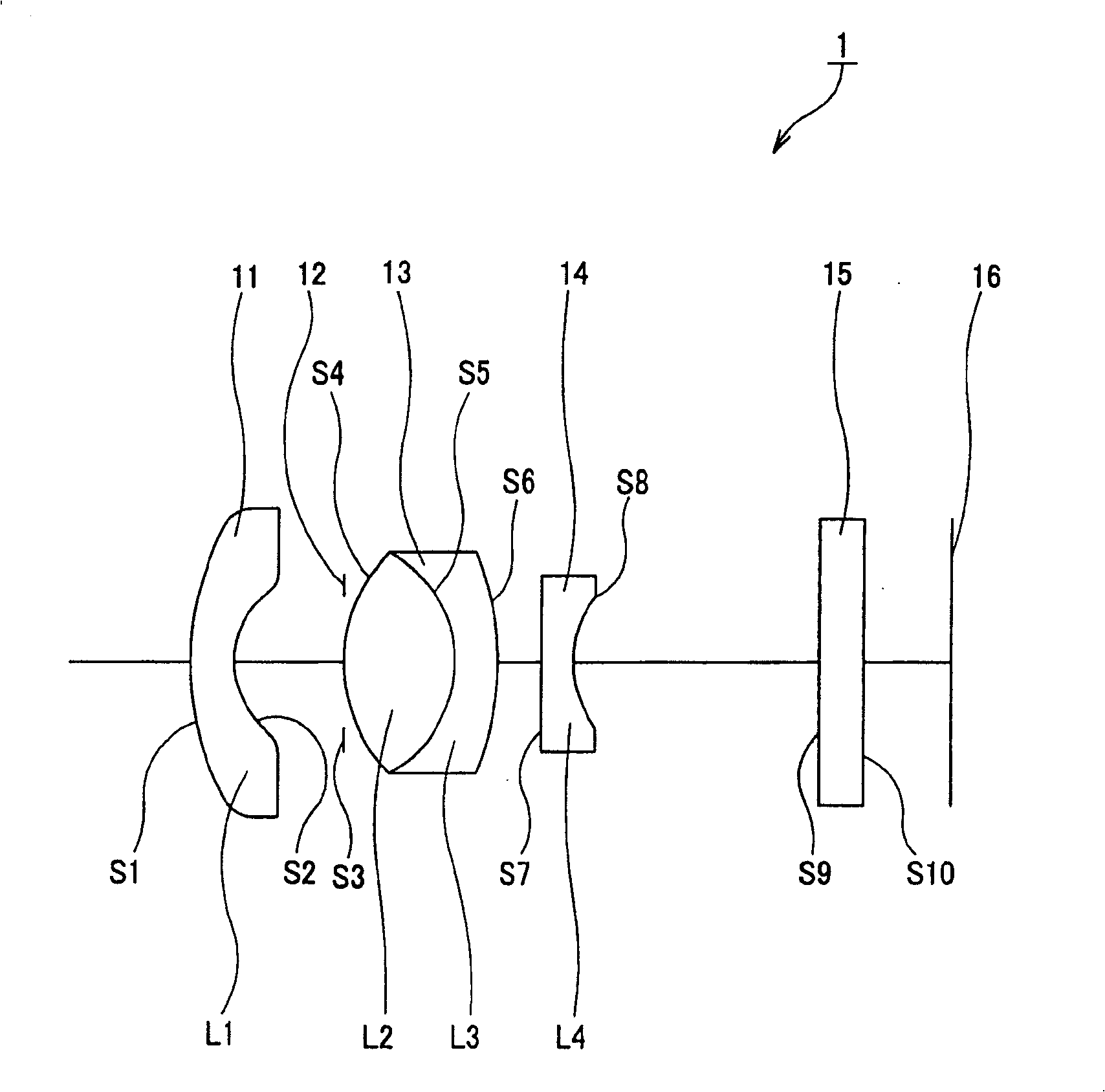Imaging lens
A camera lens, lens technology, applied in the direction of lenses, optics, instruments, etc., can solve the problems of damage to information equipment, difficult to realize, and difficult to miniaturize information equipment.
- Summary
- Abstract
- Description
- Claims
- Application Information
AI Technical Summary
Problems solved by technology
Method used
Image
Examples
no. 1 approach
[0047] Below, combine Figure 1 to Figure 3 , the imaging lens 1 as the first embodiment of the present invention is explained.
[0048] Such as Figure 1 to Figure 3As shown, the imaging lens 1 includes: a first lens group 11 with negative refractive power, a diaphragm 12, a second lens group 13 with positive refractive power, and a third lens group 14 with negative refractive power. One side is configured sequentially.
[0049] The imaging lens 1 guides light into the first lens group 11, passes through the aperture 12, the second lens group 13 and the third lens group 14 in turn, and passes through the optical filter 15 to be described later, and gathers the light in the first lens group configured in the image. On the imaging plane of the imaging device 16 on the side. The imaging device 16 may be a CCD for converting light collected by the imaging lens 1 into an electronic signal and outputting the electronic signal thus generated.
[0050] Specifically, the first len...
no. 2 approach
[0099] Below, combine Figure 13 to Figure 15 A second embodiment using the imaging lens of the present invention is explained.
[0100] In the following explanation, similar parts or components to those of the imaging lens 1 in the first embodiment are denoted by the same reference numerals, and detailed explanations are omitted, and only differences between parameters of the respective lenses are explained.
[0101] Similar to the imaging lens 1 of the first embodiment, the imaging lens 2 of the second embodiment can change its power by moving the second lens group 13 along the optical axis. and Figure 1 to Figure 3 resemblance, Figure 13 shows the lens arrangement in which the second lens group 13 is positioned at the wide-angle end, Figure 15 shows the lens arrangement in which the second lens group 13 is positioned at the telephoto end, Figure 14 Each lens arrangement in which the second lens group 13 is positioned between the wide-angle end and the telephoto end ...
PUM
 Login to View More
Login to View More Abstract
Description
Claims
Application Information
 Login to View More
Login to View More - R&D
- Intellectual Property
- Life Sciences
- Materials
- Tech Scout
- Unparalleled Data Quality
- Higher Quality Content
- 60% Fewer Hallucinations
Browse by: Latest US Patents, China's latest patents, Technical Efficacy Thesaurus, Application Domain, Technology Topic, Popular Technical Reports.
© 2025 PatSnap. All rights reserved.Legal|Privacy policy|Modern Slavery Act Transparency Statement|Sitemap|About US| Contact US: help@patsnap.com



